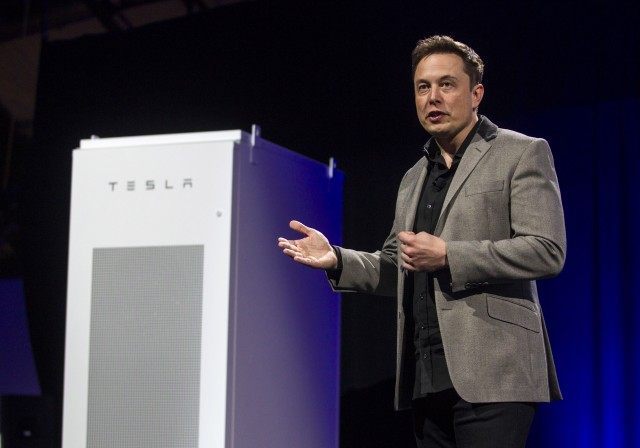A new, unauthorized, supposedly “tell-all” biography just released by Bloomberg’s Ashlee Vance claims that serial entrepreneur and Tesla (TSLA-NASDAQ) CEO Elon Musk hid from investors and customers that the electric car company was down to two weeks of cash in early 2013 and had to beg for Google to consider buying the company.
The only problem with the book’s premise is that Wall Street traders at the time were heavily shorting the stock expecting a bankruptcy and Forbes Magazine and other mainstream publication wrote articles calling for the company to shut down.
The essence of Vance’s story in “Elon Musk: Tesla, SpaceX, and the Quest for a Fantastic Future” is that when thousands of potential customers in early 2013 that had placed online reservations for Tesla’s Model S sedan, which began delayed production in 2012, refused to close and take delivery of the six figure cars, Musk was so low on cash that he surreptitiously made a temporary closure of the Fremont factory that was “unnoticed by the public” and “undisclosed to investors.”
But Vance makes no mention of the fact that customers in late 2012 were already spooked about writing the $90,000 check to take possession of a new Tesla in early 2013 because of the negative publicity surrounding neighboring Solyndra’s bankruptcy filing and competitor Fisker’s layoff of 70 percent of their employees. Fisker would later file for bankruptcy.
Tesla’s February 20, 2013 “Shareholder Letter” clearly stated that the company was bleeding cash: “In Q4 2012, our negative free cash flow (cash from operations plus capital expenditures) was $102 million.”
Vance could have benefited from the widely-read and discussed March 8, 2013 post on the influential VR World blog titled, “Tesla Lays Off 100 Workers Due To NYT Article Cancellations?“. VR wrote, “In what appears to be a necessary decision to keep the company running, TESLA has decided to lay off 100 workers from their manufacturing plant where they make the Model S electric car.”
The article VR is referring to was New York Times’s journalist John Broder’s February 8, 2013 review of a TESLA Model S that he test-drove along the East Coast. Broder called the car flawed in several ways and said that the car’s batteries ran out of juice while he was driving on a Connecticut freeway in cold weather, leaving him stranded.
The news report thrilled Wall Street traders that were shorting the stock because the negative publicity was expected to cause more Tesla customers to delay taking delivery of their Model S.
But Elon Musk fired back at the Times with what Broder later acknowledged was a “plethora of data collected from the vehicle.” Musk used the data to support the argument that John Broder already had an outcome in driving range that he was actually better than the range Tesla advertises.
At the time, Musk told reporters and posted on Tesla’s website that some customers had canceled as a result of the fear, uncertainty and doubt caused by the NYT review. Musk did not reveal the scope of the cancellations, but the 100-person layoff had to have been seen as very significant.
Vance says that at the worst point of the Tesla drama in March 2013, Musk contacted his friend Larry Page, Google’s co-founder and CEO. They started negotiating an $11 billion deal in which Google would buy Tesla and keep Musk at its helm for another eight years, or until the company started producing its Model 3 sedan aimed at middle-class buyers.
The subsequent reviews of the TESLA Model S by reporters that tried to replicate Broder’s terrible experience found no issues with the car when taking the same route. The New York Times made a rare apology for some inaccuracies.
But the ensuing positive press claiming that the arrogant “Grey Lady” had unfairly slimed Musk and Tesla became a rallying cry for customers to show support for one of the century’s greatest entrepreneurs by taking delivery of their Teslas.
Musk had his revenge when Tesla’s stock rose tenfold over the next year-and-a-half. Many Wall Street traders were crushed by their inability to appreciate how hard Musk would work to make Tesla a spectacular success.
I still have serious doubts about the viability of Tesla or its home and office “Energy Battery Back-Up System Finally Unveiled,” last week. But no one should use innuendo to underestimate Elon Musk’s resolve and relentless drive for excellence.

COMMENTS
Please let us know if you're having issues with commenting.